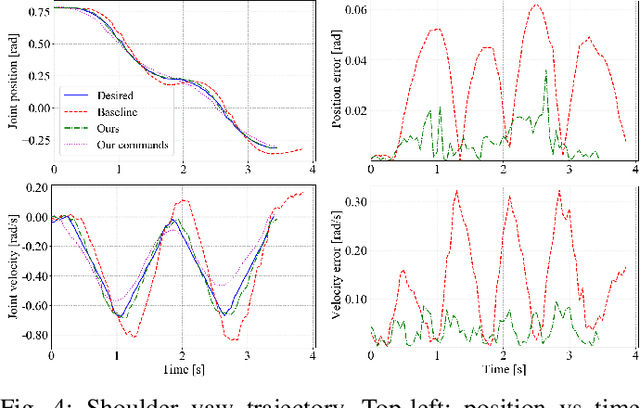Flexible-Joint Manipulator Trajectory Tracking with Learned Two-Stage Model employing One-Step Future Prediction
Paper and Code
Dec 06, 2021



Flexible-joint manipulators are frequently used for increased safety during human-robot collaboration and shared workspace tasks. However, joint flexibility significantly reduces the accuracy of motion, especially at high velocities and with inexpensive actuators. In this paper, we present a learning-based approach to identify the unknown dynamics of a flexible-joint manipulator and improve the trajectory tracking at high velocities. We propose a two-stage model which is composed of a one-step forward dynamics future predictor and an inverse dynamics estimator. The second part is based on linear time-invariant dynamical operators to approximate the feed-forward joint position and velocity commands. We train the model end-to-end on real-world data and evaluate it on the Baxter robot. Our experiments indicate that augmenting the input with one-step future state prediction improves the performance, compared to the same model without prediction. We compare joint position, joint velocity and end-effector position tracking accuracy against the classical baseline controller and several simpler models.
 Add to Chrome
Add to Chrome Add to Firefox
Add to Firefox Add to Edge
Add to Edge